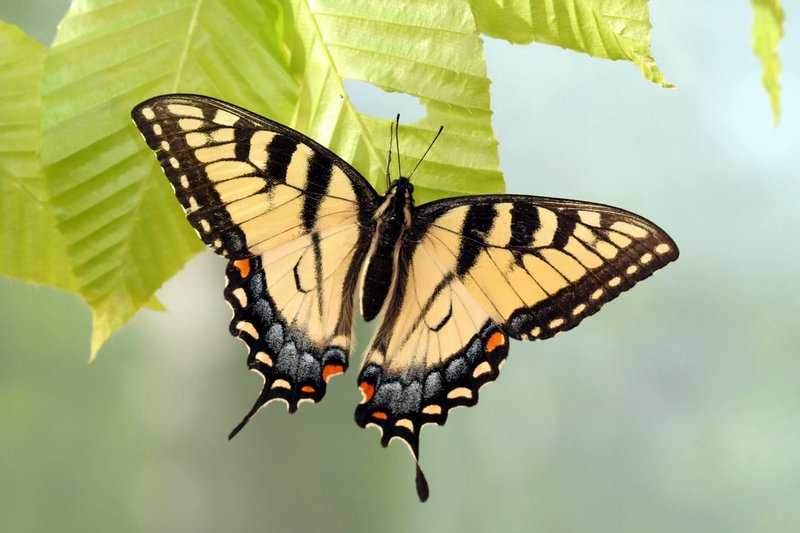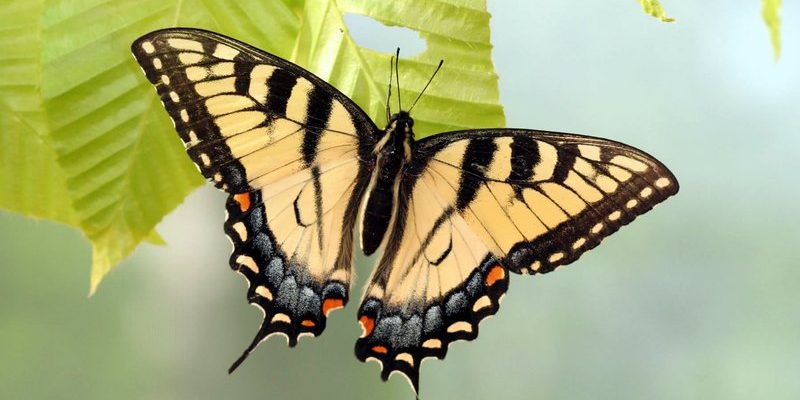
Pollination is like nature’s matchmaking process. It helps plants reproduce by transferring pollen from one flower to another. Think of it as a dance where each partner has an important role. The swallowtail butterfly, along with other pollinators, helps keep this dance going. So, let’s dive deeper into how these butterflies contribute to our environment and the other important “jobs” they do.
What is Pollination and Why is it Important?
Let’s break it down: pollination is the transfer of pollen from the male part of a flower (the anther) to the female part (the stigma). This process is crucial for the production of seeds, which means new plants can grow. Without pollination, many plants would struggle to reproduce, and that would have a cascading effect on the entire ecosystem.
Imagine walking into a world with fewer flowers, fruits, and vegetables. Not only would it look dull, but our food supply would be at risk. Pollinators like the swallowtail butterfly help ensure that we have a variety of fruits, vegetables, and nuts to enjoy. Honestly, without these little workers, our diets would be vastly different!
Swallowtail Butterflies as Pollinators
Swallowtail butterflies are fantastic at pollination, and here’s why: they love to visit a wide range of flowers. Their long proboscis (that’s their straw-like tongue) allows them to reach deep into flowers for nectar. As they sip, they brush against the flower’s anthers, collecting pollen, which they unknowingly carry to the next flower they visit.
Their role as pollinators is especially vital for plants in gardens and agricultural settings. Many of the colorful blooms you see in parks or the fruits you pick from trees rely on swallowtail butterflies for reproduction. It’s like they’re nature’s little helpers, making sure everything stays vibrant and alive.
Other Roles of Swallowtail Butterflies in Ecosystems
Beyond pollination, swallowtail butterflies have other important roles in their ecosystems. They serve as a food source for various animals. Birds, small mammals, and even other insects rely on butterflies for nutrients. This makes them an integral part of the food web.
Also, their presence can indicate the health of an ecosystem. You see, swallowtail butterflies are sensitive to environmental changes. If their numbers start declining, it can signal that something isn’t right in the habitat, whether it be pollution or loss of vegetation. By studying these butterflies, scientists can get insights into the overall well-being of the environment.
The Life Cycle of a Swallowtail Butterfly
To understand their contributions better, let’s take a peek at the life cycle of a swallowtail butterfly. It begins with an egg laid on a host plant, which the caterpillar will eventually eat. After hatching, the caterpillar (or larva) goes through several stages of growth, known as instars, during which it sheds its skin.
Once it has grown enough, the caterpillar forms a chrysalis (a protective casing) where it undergoes metamorphosis. After a few weeks, the adult swallowtail butterfly emerges, ready to take on its various roles in nature. This entire process from egg to adult can take several weeks to months, depending on environmental factors like temperature and food availability.
Swallowtail Butterflies and Conservation Efforts
As beautiful and beneficial as swallowtail butterflies are, they face threats from habitat loss, pesticides, and climate change. Conservation efforts are crucial to protect them and their habitats. Planting native flowers in gardens can help provide food and shelter for these butterflies.
Additionally, reducing pesticide use plays a big role in making sure their populations thrive. You might be wondering how you can help. Simple changes in your gardening practices, like using natural pest control methods and creating butterfly-friendly spaces, can go a long way.
Creating a Butterfly Garden
If you’re inspired to attract swallowtail butterflies to your yard, here are some tips to create your own butterfly garden:
- Choose native plants: Native flowers are more appealing to swallowtails and provide the right nutrients.
- Add host plants: Swallowtails lay eggs on specific plants. For example, the Eastern Tiger Swallowtail loves to lay eggs on cherry or tulip trees.
- Provide water sources: Butterflies need water, so consider adding shallow dishes or birdbaths with pebbles where they can land safely.
- Avoid pesticides: Reduce or eliminate chemical pesticides to create a safe habitat for butterflies and other beneficial insects.
By taking these steps, you not only help assist in pollination but also contribute to a healthier ecosystem.
Swallowtail butterflies are more than just a pretty sight in our gardens; they play a crucial role in pollination and maintaining healthy ecosystems. Their graceful movements play a big part in ensuring plants can reproduce, which in turn supports food sources for many other animals, including us.
Protecting these butterflies and their habitats is essential for keeping our world vibrant and full of life. So, whether you’re an avid gardener or just someone who appreciates nature, consider what you can do to welcome these beautiful pollinators into your space. After all, every small action can lead to big changes in the ecosystem.

